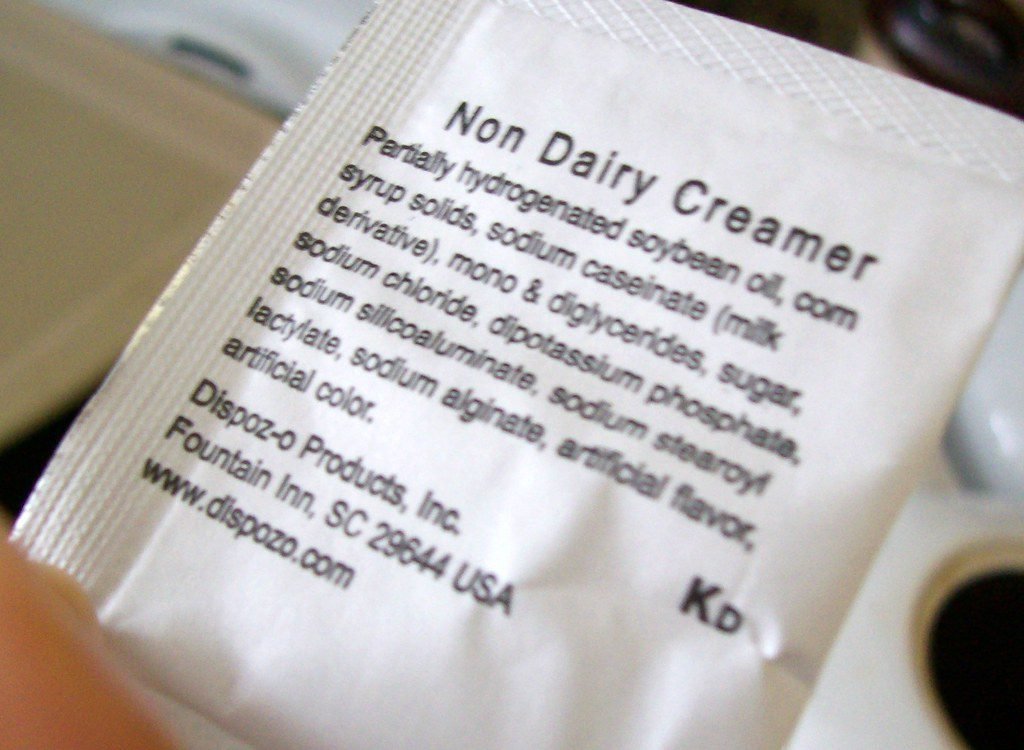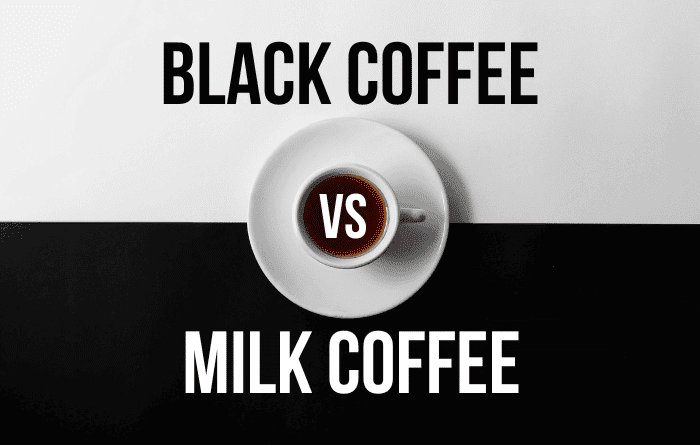How Long Does Coffee Creamer Last? Duration and Storage Tips
Coffee Queries is reader-supported. When you buy through links on our website, we may earn an affiliate commission. Learn More
In our daily routines, coffee often plays a starring role, with coffee creamers enhancing the flavor and texture of our favorite brew. As with all food and drink additives, understanding the shelf life of coffee creamers is essential for both taste and safety. This article will explore how long different types of coffee creamers last and provide tips on how to store them effectively!
How Long Does Coffee Creamer Last?
When still sealed, liquid coffee creamer can typically remain fresh for several weeks to a few months, depending on its kind (dairy or non-dairy) and the ingredients used. After breaking the seal, it usually retains its freshness for about 7-14 days, provided it’s correctly stored in the fridge.
Now that you know the answer, let’s dive into more detail about coffee creamer expiry dates, depending on their individual types.
1: Non-dairy Creamers
Non-dairy coffee creamers tend to have a longer shelf life than their dairy-infused counterparts. Dairy is among the ingredients that deteriorate the fastest. Hence, if you want a creamer but like to keep one on hand, non-dairy options might be your best bet.
There are two main categories of non-dairy liquid creamers:
- Shelf-stable
- Require Refrigeration
Shelf-stable non-dairy creamers boast a longevity of 6 to 12 months when unopened and can often remain good for several months beyond their printed expiration date.
Typically, it’s considered less risky to use non-dairy liquid creamers past their suggested date than to do the same with dairy-based ones.
On the other hand, as the name suggests, refrigerated non-dairy creamers are sold chilled and must be kept cool. Their shelf life is comparatively shorter, but they can maintain quality for roughly a week beyond expiration. After breaking the seal, most non-dairy creamers stay fresh for about 10 days.

2: Dairy Creamers
While delightful for coffee enthusiasts who enjoy milk-based additions, dairy creamers have a relatively shorter shelf life than their non-dairy counterparts.
- Liquid dairy creamers range have a life of 2 weeks to 6 months based on the type, with varieties like condensed milk, heavy cream, or half-and-half typically lasting a few weeks in the fridge.
- Although some can be used a few days before expiration, it’s risky due to potential health concerns.
- There are also shelf-stable dairy creamers with an extended shelf life of over 6 months, but they’re rare.
- Once opened, most dairy creamers remain fresh for 5 to 10 days or up to two weeks with refrigeration.
3: Powdered Creamers
Powdered coffee creamers take the lead when it comes to shelf life. With a lifespan ranging from 1 to 3 years based on the brand, they can often stretch beyond this, especially when stored correctly.
Determining the usability of a powdered creamer past its expiration date can be challenging. It boils down to your comfort levels and taste preferences. While some people might be okay with using an expired creamer, if you’re cautious, it might be best to discard it and play it safe.

4: Coffee Creamer Cups
Coffee creamers are also available in convenient single-serve cups, typically sufficient for one coffee serving. These petite creamers generally have a shelf life of about 6 months, though some brands can remain fresh for up to 9 months.
Once you’ve opened one of these miniature containers, it’s best to use its contents immediately. However, if there’s any left, you can store it in the fridge and consume it within the next three days.

5: Plant-based Creamers
Plant-based coffee creamers have surged in prevalence as more individuals seek dairy-free alternatives to elevate their coffee experience.
- Oat milk creamers have significantly risen in the last two years and offer a gluten-free and mildly sweet touch to coffee.
- Coconut milk creamers are a go-to for froth enthusiasts, thanks to their natural fats that emulate the richness of traditional cream.
- Soy milk, once the lone non-dairy contender, maintains its appeal with a dairy-like texture and an array of flavors, though one should be mindful of potential high-sugar variants.
- Almond milk, while perhaps not the latest fad, still attracts those prioritizing flavor with fewer calories.
Regardless of type, these plant-based options typically last 3 to 6 months unopened on the shelf, but after opening, they need refrigeration and are good for up to 10 days.

Suggested Reading: Acidity of Tea Vs. Coffee: Compared Risks and Benefits
How Can You Tell If The Coffee Creamer Has Gone Bad?
Though coffee creamers do not go bad immediately after their expiry date passes, you may still wonder what a bad coffee creamer looks like.
The following are signs indicating that your creamer has passed its expiry date.
1. Assess Smell and Taste
A reliable way to check the freshness of your creamer is through your senses. If you’re skeptical about its current state, pour a small amount of the liquid creamer and take a good sniff.
Fresh creamer should have a mild, milky aroma. If it smells sour or off-putting, that’s a red flag. Next, you can cautiously taste a bit. Any hint of sourness or an unusual flavor suggests it might have turned bad. When in doubt, always prioritize safety and discard the creamer.
2. Examine the Expiration Date
While products can sometimes last beyond their expiration date, it’s crucial to be vigilant, especially with products like creamers. Read the date indicated on the package. If the liquid creamer has surpassed this date, be aware that its optimal freshness window might be closing.

It could remain good for a few more days to a week when stored in the fridge, but it’s always better to be cautious. Additionally, if you’ve frozen your dairy creamer and it’s been there for over 2 weeks post-opening, it’s advisable to discard it to avoid potential health risks.
3. Observe Any Texture Changes
Powdered creamers have a distinct texture that can change if compromised. If you notice that the powder has become lumpy or if there’s any sign of mold, it might have been exposed to moisture or other contaminants.
This change in texture can affect the quality and safety of the creamer. It’s always best to avoid taking chances with such products, as consumption might have adverse effects.
4. Test with a Coffee Cup
If you’ve run through the previous steps and are still trying to figure out your creamer’s condition, there’s a practical test you can conduct.
Brew a cup of coffee and add the creamer to it. The interaction of the creamer with the hot coffee can amplify any off-flavors or scents that weren’t noticeable before. The creamer is still good if your coffee tastes and smells as usual.
However, if your coffee seems off in flavor or aroma, it’s best to discard the creamer to ensure you’re not consuming something potentially harmful.
Also, Read: Is Coffee Making You Cough? Find Out Why and How to Prevent It
Can I Use Coffee Creamers Past The Expiry Date?
A common misconception regarding expired foods is correlating expiration with spoilage. However, the truth is that “expired” doesn’t necessarily mean “spoiled.”
Consequently, if you’ve ingested expired creamer, it typically doesn’t pose a significant health threat unless it has actually spoiled. Consuming a spoiled coffee creamer tends to have effects akin to drinking rancid milk.
The following are the potential side effects of consuming a spoiled coffee creamer:
1: Digestive Discomfort and Acid Reflux: Consuming even a minor quantity of spoiled coffee creamer might lead to digestive upset, heartburn, and acid reflux. Typically, these symptoms reduce within a day after consumption.
2: Abdominal Distress: Ingesting a significant amount of coffee creamer can result in discomfort, like abdominal cramping. This discomfort often goes hand in hand with the digestive pain and acid reflux.
3: Loose Bowels/Diarrhea: Dairy-based coffee creamers have a tendency to spoil quickly if not refrigerated post-opening. If consumed when spoiled, it can lead to loose bowel movements. During such times, staying hydrated by drinking ample water is crucial.
Recommended Read: Does Iced Coffee Make You Poop? Know The Truth
Tips To Prolong The Life Of Coffee Creamers
Let’s discuss a few valuable tips for each creamer type to make your coffee creamer last longer.

1: Liquid Dairy Creamer
Here’s how you can ensure proper storage of liquid dairy coffee creamer to ensure its freshness for an extended period:
- Prompt Refrigeration After Opening: Always refrigerate your liquid dairy coffee creamer after its first use to prolong its freshness. Ideally, it should be kept at temperatures ranging from 33°F to 40°F (0.5°C to 4.4°C).
- Ensure a Tight Seal: Double-check that the lid or cap is securely fastened each time you use your creamer. This minimizes the risk of contamination and retains its freshness.
- Adhere to the Expiry Date: Always be attentive to the “use by” or expiration date mentioned on your creamer’s packaging. Typically, post-opening, most liquid dairy creamers remain fresh for around 7-10 days when stored in the fridge. However, always refer to package specifics.
- Minimize Room Temperature Exposure: Limit your creamer’s time outside the refrigerator. After using, promptly return it to the cold to ensure it remains fresh.
Suggested Reading: How Long Does Coffee Last In The Fridge?
2: Liquid Non-dairy Coffee Creamer
- Cooling Requirements: Both dairy and non-dairy creamers thrive in a cool environment for maximum freshness and prevention of spoilage. Non-dairy creamers like the dairy ones require consistent cold storage between 34°F/1°C and 40°F/4°C.
- Storage Flexibility with Non-Dairy Options: Some non-dairy variants are designed to be shelf-stable, meaning they can remain at room temperature until they’re unsealed. Post-opening, they should join their dairy counterparts in the fridge.
- Light and Heat Exposure: Keep both creamer types shielded from direct sunlight and heat sources. Dairy creamers can be especially vulnerable, with excessive light and heat exposure possibly hastening spoilage and altering their desired taste and consistency.
3: Powdered Creamer
To ensure that the powdered creamers stay fresh for an extended period, you can follow these tips below:
- Secured Storage: To maintain the peak quality of your powdered coffee creamer, ensure it’s kept in a container resistant to moisture, air, and external contaminants. While the original resealable packaging is often sufficient, transferring the creamer to containers, such as a sealed glass jar or a food-grade plastic vessel with a tight lid, is also beneficial.
- Optimal Environment: Temperature shifts can lead to internal container condensation, potentially causing the powdered creamer to form clumps or degrade. Position the container in a cool and dry spot, shielded from moisture and direct sunlight. A room temperature of approximately 68°F (20°C) with minimal humidity is ideal. Ensure the creamer isn’t near heat sources like stoves or ovens.
- Guard Against Odors: Since powdered creamers can take on strong surrounding smells, storing them away from pungent foods or items is crucial to preserve their original flavor.
- Mark and Track: If you relocate the creamer to another vessel, label it with the product’s name and its expiration or best by date. This assists in ensuring the creamer is consumed while still at its best.
Editor’s Pick: How Long Does Ground Coffee Last?
Conclusion
Coffee creamers can elevate your coffee experience, adding richness or introducing new flavors. By mastering the art of storing coffee creamers, recognizing their shelf life, and knowing the signs of freshness, you can maximize the value of your purchase and savor delicious, creamy coffee just as you envisioned when selecting your creamer. Happy caffeinating!
Read Next: How to Remove Coffee Stains from Teeth: 10 Effective Ways






